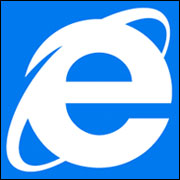
Rumors about Microsoft’s new browser, code-named “Spartan,” have been heating up: It will be an app; no, it will not. It will replace Internet Explorer — no, it will not.
It will use Microsoft’s Trident rendering engine and the Chakra JavaScript engine developed for IE 9. Probably.
Spartan will be a new browser that will look and work more like lightweight browsers such as Google Chrome and Mozilla Firefox.
No, it won’t.
“We are talking about IE 12,” said Rob Enderle, principal analyst at the Enderle Group. “‘Spartan’ is just the code name.”
Microsoft traditionally comes up with a new version of IE in line with a new release of the Windows OS, but “this will be the first time they try this across all consumer Windows devices,” Enderle told TechNewsWorld.
Loads of Spartan Scuttlebutt
Spartan reportedly will include Microsoft’s Cortana personal digital assistant technology.
It apparently will offer digital inking support that will let Windows 10 users annotate Web pages using a stylus, send the notes and annotations to others, and store those pages in OneDrive where they can be accessed by any browser.
Spartan reportedly will let users group tabs any way they like. It may let users open multiple sites in a group of tabs together, so they won’t have to switch between tabs.
Spartan reportedly will replace the “Modern” UI, aka “Metro,” which was part of Windows 8.
The new browser will run across PCs, tablets and phones.
Developers “should like the consistency,” Enderle told TechNewsWorld.
Microsoft has solicited user comments and opinions, which in itself is notable.
“This is so very different from Windows 8 and Vista, when it seemed like Microsoft was almost hiding from user comments and opinions,” Enderle said.
Spartan reportedly will include a reading mode that will let users see just the text of an article, and will have a borderless window that lets content stretch to the screen’s edges.
The Need for Change
“The general sense is that IE was built for a PC-centric era, for enterprise productivity-type uses, and it’s time for a radical reinvention,” said Avni Rambhia, digital media industry principal at Frost & Sullivan.
The usage pattern for browsers is changing — from accessing audio, video and pages on the Internet to serving as vehicles for advertisements, she told TechNewsWorld.
“The rise in HTML 5 use is changing the modalities of how videos are delivered,” Rambhia explained. “It makes sense that Microsoft wants to rebuild the browser from the ground up.”
At the very least, she speculated, Spartan would be optimized for Office 360, on which Microsoft “has a huge bet.”
When Spartan Might Debut
Spartan’s unveiling could take place on Jan. 21, along with Microsoft’s announcement of Windows 10.
“That’s my expectation,” Enderle said. “It’s based on a consensus of rumors, so I think we can rely on that date.”
In any event, Microsoft likely will release a beta of Spartan by the end of March at the latest, Frost’s Rambhia speculated. The actual launch date “would probably be before the back-to-school season.”
Microsoft is expending “a great deal of effort” in ensuring Spartan is backward-compatible with its predecessors, Enderle said. “Reading between the lines, it feels like they’re using some of their visualization technology to make this happen, and I’m expecting backward-compatibility to be better than in prior versions.”
Meanwhile, IE’s share of the browser market in the United States rose from 31 percent in mid-November to 40 percent in December, while Google Chrome’s share fell from 35 percent to 30 percent during the same period, StatCounter reported.
It’s hard to explain why, given that PC sales are weak, but if this is a trend, it might portend well for IE’s future.






















































